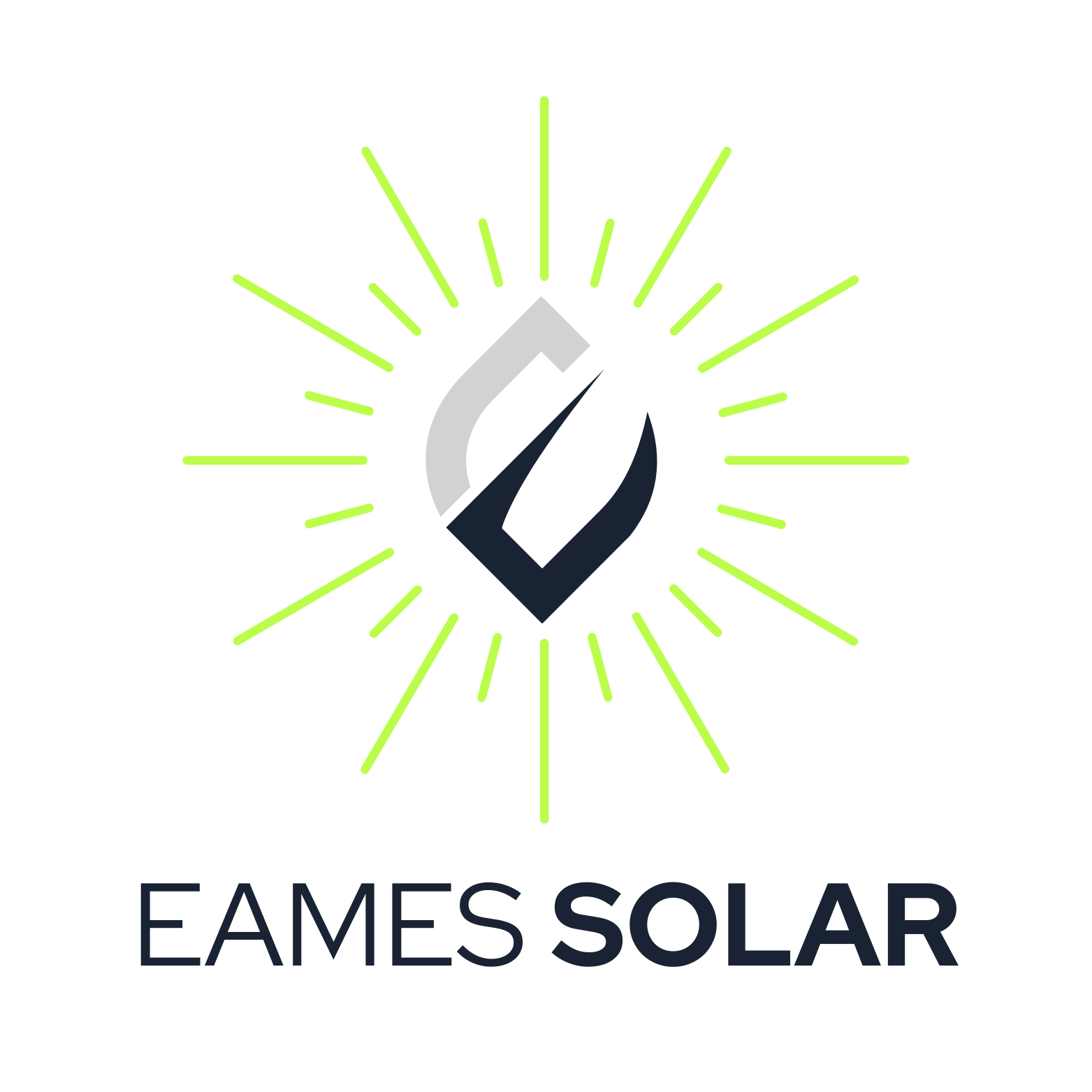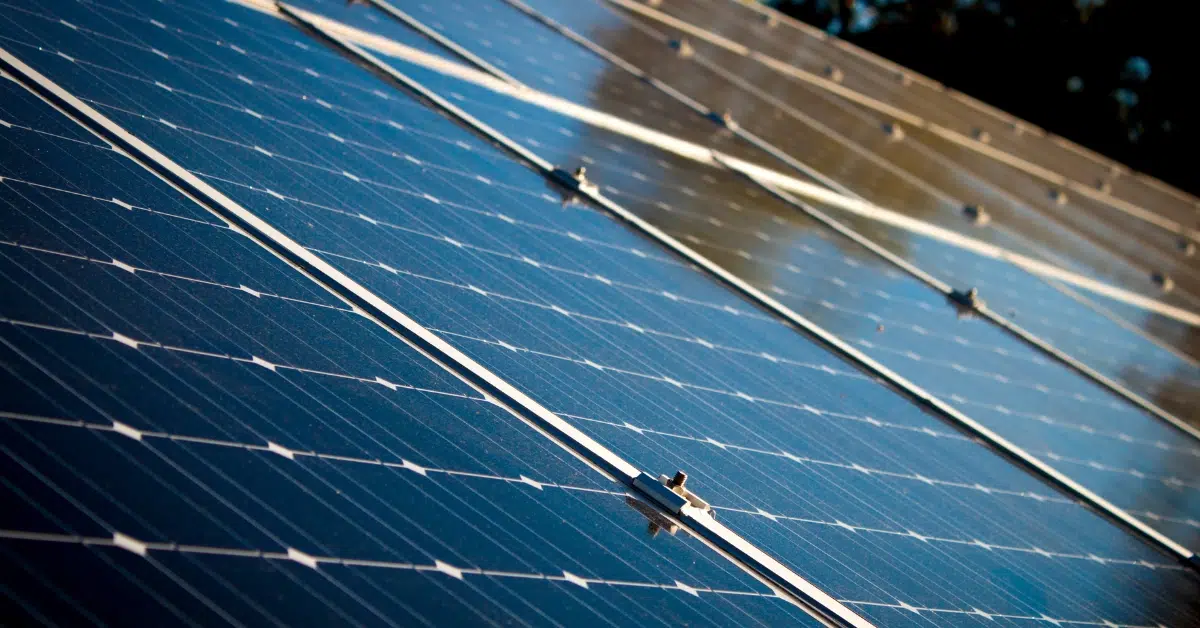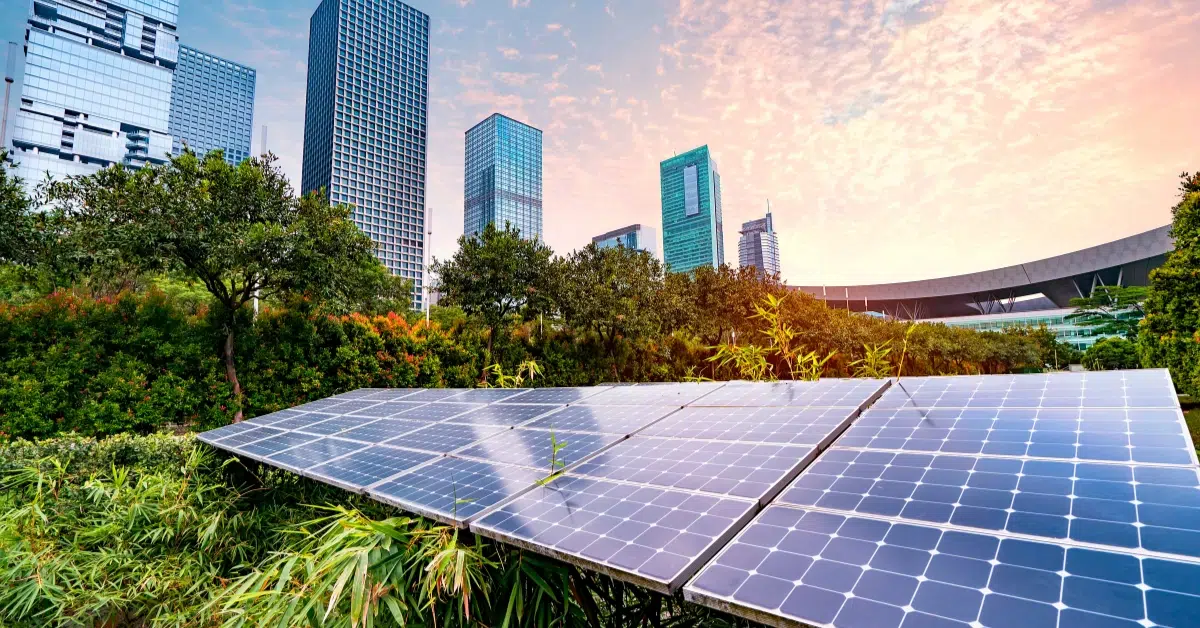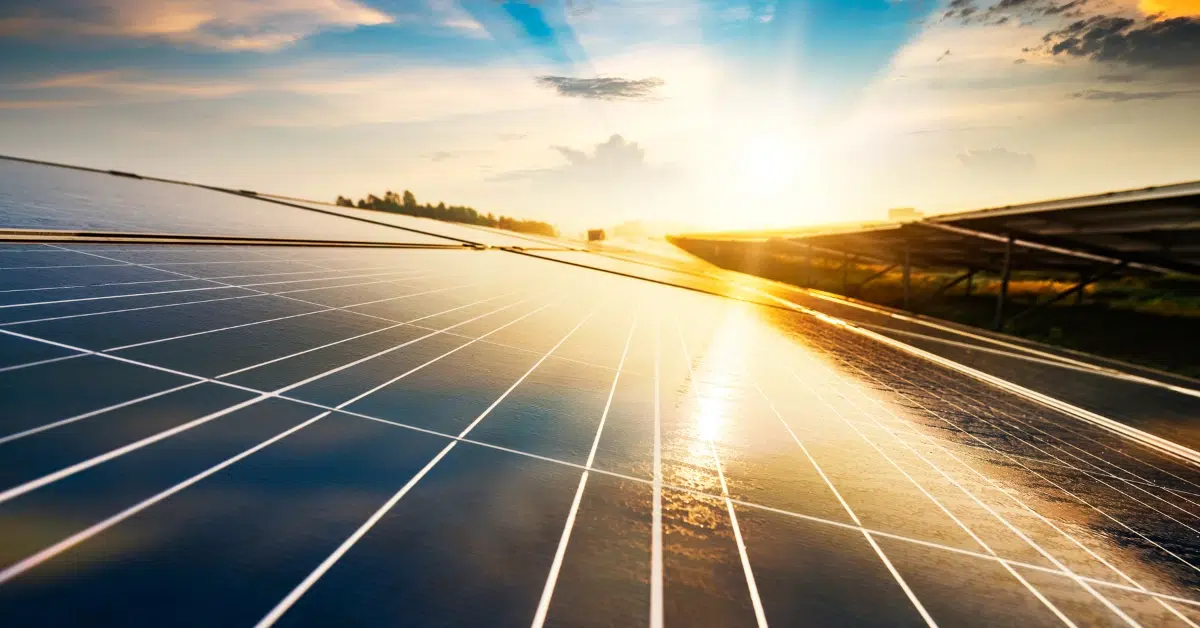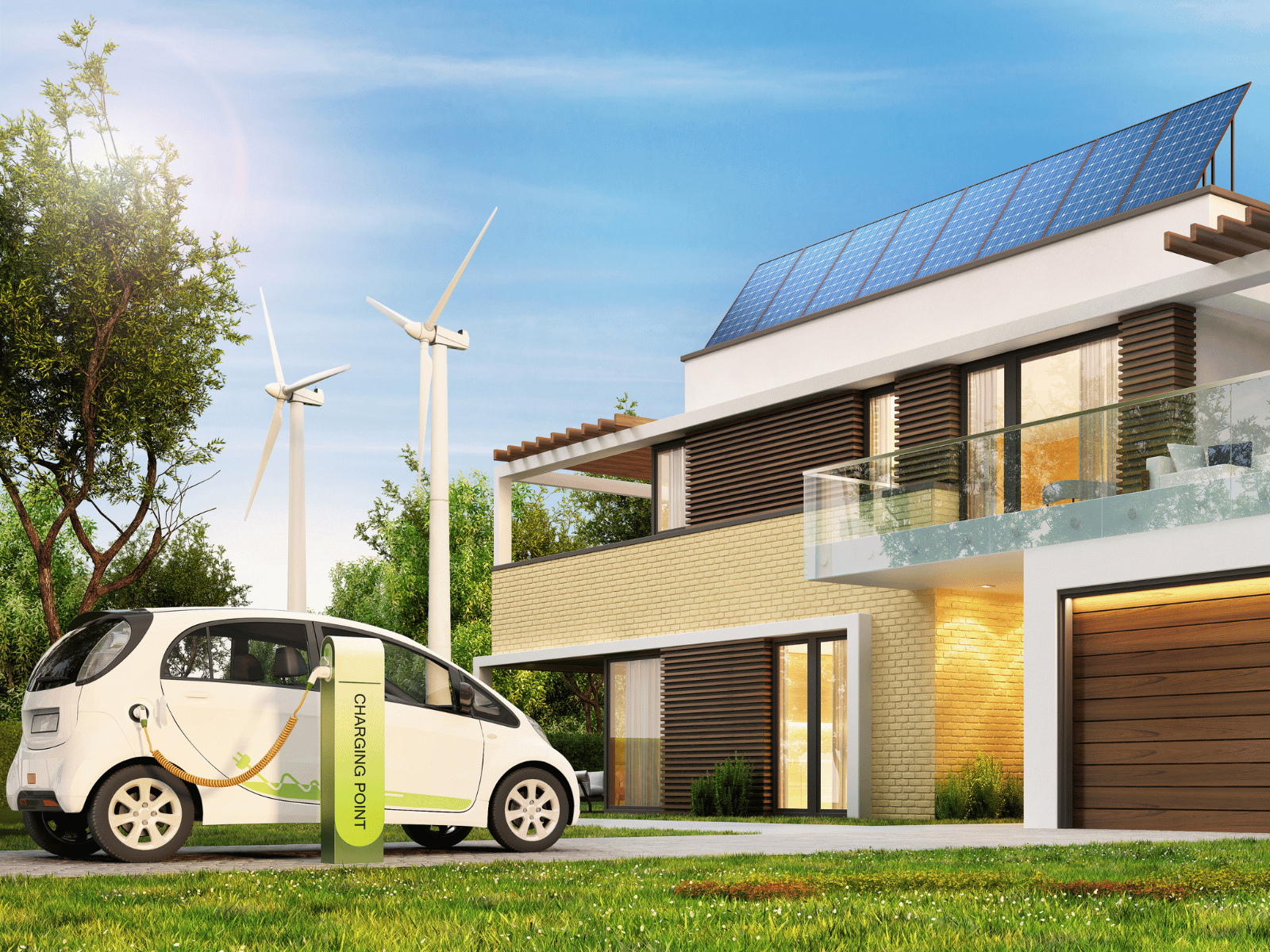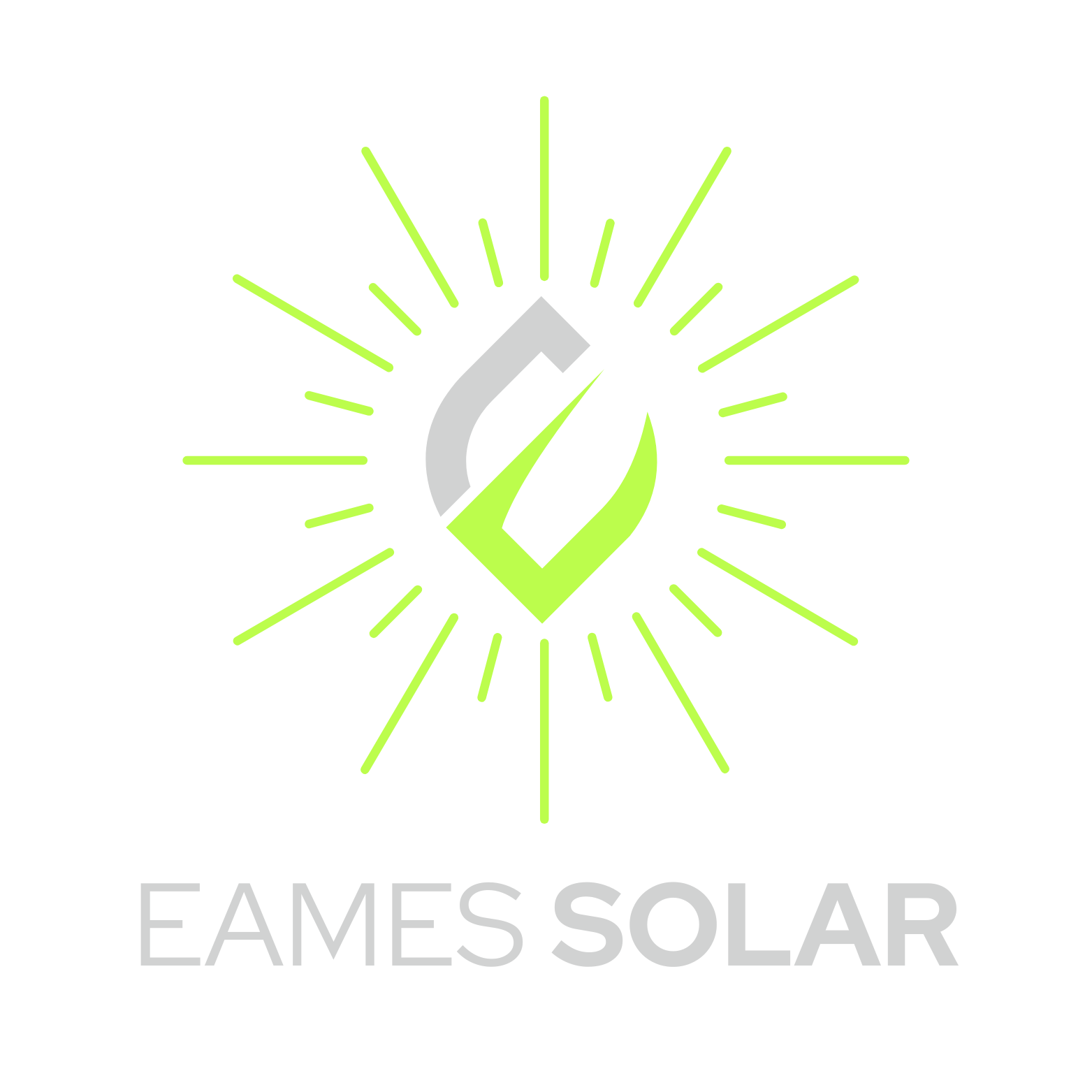Solar panels are a long-term investment in sustainable energy, and their optimal performance is crucial for reaping the full benefits of clean power. Regular maintenance is vital in ensuring that solar panels operate at peak efficiency. In this article, we’ll explore how to spot solar panel damage, dirt, and more, empowering homeowners and businesses to take proactive steps toward maintaining their solar energy systems.
How to Tell if Solar Panels Are Damaged
Conducting a visual inspection of solar panels is the initial and fundamental step in maintaining the health and efficiency of a solar energy system. This proactive approach allows homeowners and businesses to identify visible issues promptly, addressing them before they escalate. Here’s a comprehensive look at how a visual inspection serves as the first line of defense:
Surface Examination
Start by visually examining the surface of each solar panel. Look for any signs of dirt, dust, or debris accumulation. These elements can significantly reduce the amount of sunlight reaching the photovoltaic solar cells, diminishing energy production. A clean and unobstructed surface is crucial for optimal solar panel performance.
Physical Damage Assessment
Inspect the panels for any visible physical damage, such as cracks, scratches, or chipping. Physical damage can compromise the structural integrity of the panels and hinder their ability to convert sunlight into electricity. Addressing such issues promptly prevents further deterioration and ensures the longevity of the solar panels.
Frame and Mounting Inspection
Assess the integrity of the panel frames and mounting structures. Check for signs of rust, corrosion, or damage to the frames, as they provide essential support and protection for the solar panels. Ensure that the panels are securely fastened to their mounts, preventing potential issues during high winds or adverse weather conditions.
Connection Checks
Examine the electrical connections and wiring visible on and around the solar panels. Loose or damaged connections can lead to electrical issues, affecting the overall performance of the solar energy system. Ensure that all connections are secure, free from corrosion, and that there are no exposed wires.
Shade Analysis
Assess the surroundings to identify any new sources of shade that may have developed over time. Trees, buildings, or new structures can cast shadows on solar panels, reducing their exposure to sunlight. Trim or remove obstacles that contribute to shading to maintain consistent energy production.
Inverter Inspection
While conducting a visual inspection, check the inverter for any visible warning lights or error messages. The inverter is a critical component that converts DC to AC power, and issues with the inverter can impact the overall efficiency of the solar panel system. Promptly address any inverter-related concerns.
Cleaning Needs
Visual inspection is an opportune time to evaluate whether the solar panels require cleaning. Accumulated dirt, bird droppings, or other debris can compromise the effectiveness of the panels. Regular cleaning, informed by visual inspections, helps maintain optimal sunlight absorption and energy production.
Documentation and Record Keeping
Keep detailed records of each visual inspection, noting any observations, maintenance activities, or changes in the system’s surroundings. Maintaining a comprehensive log helps track the performance history of the solar panels, facilitating trend analysis and proactive decision-making.
Implementing Visual Inspection as a Routine Practice
Incorporating visual inspection as a routine practice—performed at regular intervals—forms the cornerstone of solar panel maintenance. By developing a keen eye for details and promptly addressing any issues identified during visual inspections, solar panel owners can ensure that their investment in clean energy remains efficient and reliable for years to come. Additionally, a well-maintained system contributes to sustainable energy production and environmental conservation.
Decreased Energy Output: Monitoring Performance
Monitoring the performance of solar panels is crucial for ensuring the efficiency and longevity of a solar energy system. While a gradual decline in energy output over time is expected due to factors like aging, sudden or significant drops in performance can be indicative of underlying issues such as dirt accumulation, damage, or electrical problems. Here’s a detailed exploration of how to identify and address decreased energy output:
Regular Energy Production Tracking
Establish a baseline for the expected energy output of your solar panels based on their capacity and specifications. Regularly monitor and compare actual energy production against this baseline. Numerous online monitoring tools and platforms can provide real-time data, allowing you to identify deviations promptly.
Seasonal Variations
Recognize that energy production can vary seasonally due to factors such as sunlight duration and intensity. Understanding these natural fluctuations helps distinguish between normal changes and abnormal performance drops. Seasonal patterns should be factored into your assessment of energy output.
Comparative Analysis
Compare the energy production of individual solar panels within the system. Discrepancies in output between panels may indicate localized issues, such as shading, dirt accumulation, or damage to specific panels. Identifying and addressing these issues individually can prevent systemic performance degradation.
Infrared Imaging for Anomalies
Utilize infrared imaging to identify anomalies in the temperature distribution across the solar panels. Hotspots, areas that exhibit higher temperatures than surrounding regions, can be indicative of internal issues such as damaged or malfunctioning photovoltaic solar cells. Thermal imaging can help pinpoint the source of inefficiencies. Here is some additional information on the science behind monitoring photovoltaic panels based on infrared detection.
Weather Conditions and Cleaning Needs
Consider the impact of weather conditions on energy output. Rain can naturally clean solar panels, while prolonged periods of dry weather may lead to dirt accumulation. Adjust cleaning schedules based on local weather patterns to ensure optimal panel cleanliness and maximize energy production. Learn more about how weather impacts solar panel cleaning needs.
Electrical Monitoring
Employ sophisticated monitoring systems that track electrical parameters, including voltage, current, and power output. Sudden deviations or irregularities in these electrical metrics can indicate underlying issues such as electrical faults, connectivity problems, or inverter malfunctions contributing to reduced energy production.
Data Analysis and Trend Identification
Regularly analyze historical data to identify trends in energy production. Sudden drops or consistent declines over time may point to persistent issues that require attention. Data-driven analysis enables proactive measures, allowing for timely interventions to restore optimal performance.
Professional Inspection and Maintenance
Schedule periodic professional inspections to assess the overall health of the solar panel system. Certified technicians can conduct comprehensive checks, including visual inspections, electrical assessments, and cleaning procedures. Professional maintenance ensures that issues affecting energy output are identified and addressed promptly.
Responding to Decreased Energy Output
Upon identifying signs of decreased energy output, it’s crucial to respond promptly to maintain the efficiency of your solar panel system. Engage with a qualified solar technician to conduct a comprehensive inspection. This may involve cleaning the panels, addressing electrical issues, and replacing damaged components to restore optimal performance. Proactive measures, coupled with regular monitoring, contribute to sustained energy production and the longevity of your solar energy investment.
Hotspots: An Infrared Insight
Thermal imaging, using infrared technology, can be a valuable tool for detecting anomalies in solar panels. Hotspots—areas of the panel that are hotter than others—may indicate issues such as damage to the photovoltaic solar cells or electrical malfunctions. Infrared scans can pinpoint these problems before they escalate.
Cracks and Physical Damage
Inspect the surface of the solar panels for any visible cracks, scratches, or physical damage. Even minor imperfections can compromise the integrity of the panels and impact their efficiency. Handle this step with care, and if necessary, enlist the help of professionals for a thorough examination.
How to Tell If There Are Signs of Moisture In Solar Panel
Over time, moisture can damage the internal components of the panels and lead to a decline in performance. Addressing water-related issues promptly is crucial for preventing further damage. Here are signs of moisture in a solar panel.
Water Stains and Discoloration
Water stains or discoloration on the surface of solar panels are clear signals of moisture-related issues. These stains may indicate leaks or ingress points where water has penetrated the protective layers of the panels. Regularly inspect the surface for any irregularities in color or streaks that could signify water damage.
Water Stains and Discoloration
Water stains or discoloration on the surface of solar panels are clear signals of moisture-related issues. These stains may indicate leaks or ingress points where water has penetrated the protective layers of the panels. Regularly inspect the surface for any irregularities in color or streaks that could signify water damage.
Condensation Under the Glass
Condensation forming beneath the solar panel glass can be a sign of moisture infiltration. While some condensation is normal, excessive or persistent condensation could indicate a breach in the sealing, allowing moisture to enter and compromise the internal components of the panel.
Electrical Issues
Moisture and electricity are a problematic combination. If you observe any unusual readings on the inverter, such as fluctuations, error messages, or a complete failure to function, moisture intrusion may be the culprit. Electrical issues can arise from corrosion or short circuits caused by moisture affecting the electrical connections.
Corrosion on Connectors and Components
Moisture can accelerate corrosion on metal components, such as connectors and electrical wiring within the solar panel system. Inspect these components for rust or signs of corrosion, as this can interfere with the proper functioning of the system and lead to a decrease in energy production.
Decreased Performance Over Time
While a gradual decline in performance is a general sign of aging solar panels, a sudden and significant drop could be attributed to moisture-related issues. Internal moisture can damage the photovoltaic solar cells, reducing their ability to generate electricity efficiently.
Visible Mold or Fungi Growth
In humid climates, moisture intrusion can create an environment conducive to the growth of mold or fungi on the surface of solar panels. These biological contaminants not only obstruct sunlight but can also compromise the structural integrity of the panels if left unaddressed.
Bird Droppings and Pest Residue: More than Just Aesthetics
While bird droppings and residue from pests may seem like cosmetic issues, they can have a tangible impact on solar panel efficiency. These substances can block sunlight and, if left unaddressed, lead to more significant cleanliness and performance issues over time.
Inverter Electrical Issues
The inverter is a critical component in a solar energy system, responsible for converting the direct current (DC) generated by the solar panels into the alternating current (AC) used to power homes and businesses. Monitoring the indicators on the inverter can provide valuable insights into the health of the entire solar panel system, especially concerning electrical issues that may arise due to moisture or other factors.
Fluctuations in Output
Keep a close eye on the inverter display for any unusual fluctuations in power output. Sudden drops or spikes in the output may be indicative of electrical irregularities, such as short circuits or disruptions in the flow of electricity within the system. These fluctuations can lead to decreased energy production and may signal the presence of moisture-related issues.
Error Messages
Inverters are equipped with diagnostic capabilities that can detect abnormalities within the solar panel system. If the inverter displays error messages, it’s essential to address them promptly. Common error messages related to electrical issues include ground faults, insulation faults, or issues with the electrical connections. These messages may point to moisture intrusion compromising the electrical integrity of the system.
Complete Inverter Failure
A sudden failure of the inverter is a clear indication that something is amiss within the solar panel system. While inverter failure can be attributed to various factors, including age and wear, moisture-related issues, such as corrosion on electrical components, can contribute to a breakdown in the system. If the inverter ceases to function, it warrants immediate attention and a comprehensive inspection.
Unusual Sounds or Smells
Beyond visual indicators, pay attention to any unusual sounds or smells emanating from the inverter. Sizzling sounds, burnt odors, or signs of overheating may suggest electrical problems within the system. These issues could stem from moisture affecting the electrical connections or components, leading to potential hazards if not addressed promptly.
Corrosion on Inverter Components
Inspect the inverter for any signs of corrosion, especially on connectors, terminals, or circuit boards. Moisture intrusion can accelerate the corrosion process, compromising the electrical connections and inhibiting the inverter’s ability to function optimally. Regular checks for corrosion are crucial for preventing electrical issues associated with moisture.
Responding to Electrical Issues
If any of these electrical issues are identified during routine monitoring or inspection, it is imperative to respond promptly to prevent further damage to the solar panel system. Engage the services of a qualified solar technician to conduct a comprehensive electrical assessment. This may involve identifying and addressing the source of moisture, replacing corroded components, and ensuring the overall electrical integrity of the system.

Investing in regular maintenance and addressing electrical issues proactively not only preserves the efficiency of the solar panels but also enhances the safety and reliability of the entire solar energy system. By staying vigilant for electrical warning signs, solar panel owners can enjoy sustained clean energy production while mitigating the risks associated with electrical malfunctions.
Weathering and Corrosion: Assessing Long-Term Effects
Solar panels are exposed to various weather conditions over time. Check for signs of weathering, corrosion, or deterioration, especially around the edges and framing. Addressing these issues promptly can prevent long-term damage and extend the lifespan of the solar panel system. Learn more about how weather affects solar efficiency and cleaning.
Conclusion
The best line of defense is proactivity. To prevent dirty solar panels, get regular inspections and maintenance to maximize the efficiency and lifespan of your solar panel system. By staying vigilant for signs of dirt, damage, or other issues, solar panel owners can address problems early on, ensuring that their solar investments continue to generate sustainable power for years to come. Whether through visual checks, energy monitoring, or advanced technologies like thermal imaging, taking the time to identify and address signs of dirty or damaged solar panels is a crucial step toward maintaining a reliable and efficient solar energy system.
